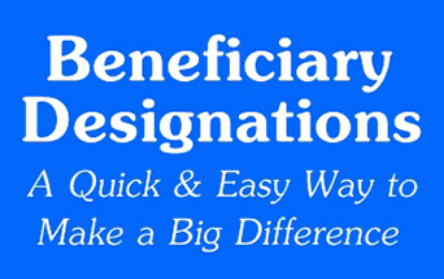- December 15, 2021
- Posted by: Deepak Jotwani, B.Comm, SME - Director - Wescan Insurance Brokers Inc.
- Category: Group Benefits


Written By Mr. Ian Tod B.A.(Econ), MBA, CFP, CLU Advance Markets Specialist, HUB Financial Inc
Shared By Deepak Jotwani, Director, Wescan Insurance Brokers
- Estate: We sometimes see the estate named as a beneficiary, or if a beneficiary designation is left blank the estate is often named by default by the carrier. But by having the estate named as beneficiary, we lose some of the most valuable attributes that insurance products provide. If insurance proceeds fall into the deceased’s estate some of the following may occur:
- All privacy is lost. The deceased estate is a matter of public record and by allowing insurance proceeds to flow into the estate anyone who cares to look can see what was left by the deceased. We can all think of instances where an insured may not want the size of the benefit nor the beneficiary known to the public, or even other family members. As long as there is a named beneficiary, privacy is kept intact.
- Potential creditor proofing may be lost. For a policy to have the highest chance of successful creditor protection, it must have an individual person as owner and an individual(s) in the preferred beneficiary class named as beneficiary. As an aside, the preferred beneficiary class includes husband, children, grandchildren, mother, father or adopting parents of insured, wife, adopted children and children of adopted children.
- Probate and legal fees become payable. If insurance proceeds are paid into the estate they now become subject to probate and legal fees. Combined, these two fees may account for up to 1.5 % of the value of the estate. One can easily see these fees may become significant in any medium to large size estate.
- Timing of payout. Even a small simple estate takes time to go through the probate and legal process. The time spent with lawyers and the courts is magnified many times as the size of the estate grows.
I personally cannot think of many situations where having the estate named as beneficiary is the optimal choice. Even for individuals without any immediate heirs should find someone or something i.e. a church or a favorite charity as the beneficiary.
It is possible in the case of multiple beneficiaries to have contingent beneficiaries for one or more of the primary beneficiaries. Look at the example above with Son A, Son B and Son C. The designations could look like 40% Son A, or to spouse of Son A if deceased, 40% to Son B or to 3 adult children equally if Son B deceased, and 20% to Son C or to SPCA if Son C deceased.
Secondly, there is no guidance provided to the trustee as to where the money can be invested nor how is it to be spent. Generally, it is accepted that the trustee will spend money only on the care, comfort, education and betterment of the child. This understanding is not carved in stone and gives the trustee a great degree of latitude as to where the money can be spent. For example, if the trustee decides the child would be better off with a new sports car no one is there to stop him. With no direction as to where the funds can be invested, the trustee could potentially invest in newly issued penny stock with the expectation of making millions. If however, the stock does not perform to the promoter’s representations (imagine that) the child could be left with nothing. Next, when the child reaches the age of majority he/she is permitted to go to the trustee and demand their share of the proceeds. Most people would not be happy with the idea of their 18 or 19 year old child receiving a large amount of cash. Along the same lines, an ITF designation gives no guidance to the trustee as to how the funds should be distributed and when. For the proceeds of a policy to be managed effectively, a formal trust agreement should be drawn up. This will insure investment guidelines are set, distribution guidelines are set, and the final dissolving of the trust is set. For smaller estates, people still may wish to use the ITF designation but great care must be taken in the selection of the trustee and keeping the trustee designation current.
For the most part, our carriers are pretty good at making sure the beneficiary designations they receive conform to accepted standards. If for some reason a beneficiary designation is unclear, the proceeds may get held up at the insurer level until the matter is resolved. There are very rare instances, but more and more in our increasingly litigious society, where a beneficiary designation may be contested. The most usual case of a beneficiary designation being contested is when an individual feels they have been unjustly left out, or the share they have been allocated is not appropriate. In these cases the proceeds are either held by the insurer or paid to a public trustee and the matter goes to court for a judge to unravel. This is a very complex area of law and far beyond the scope of this blog.

